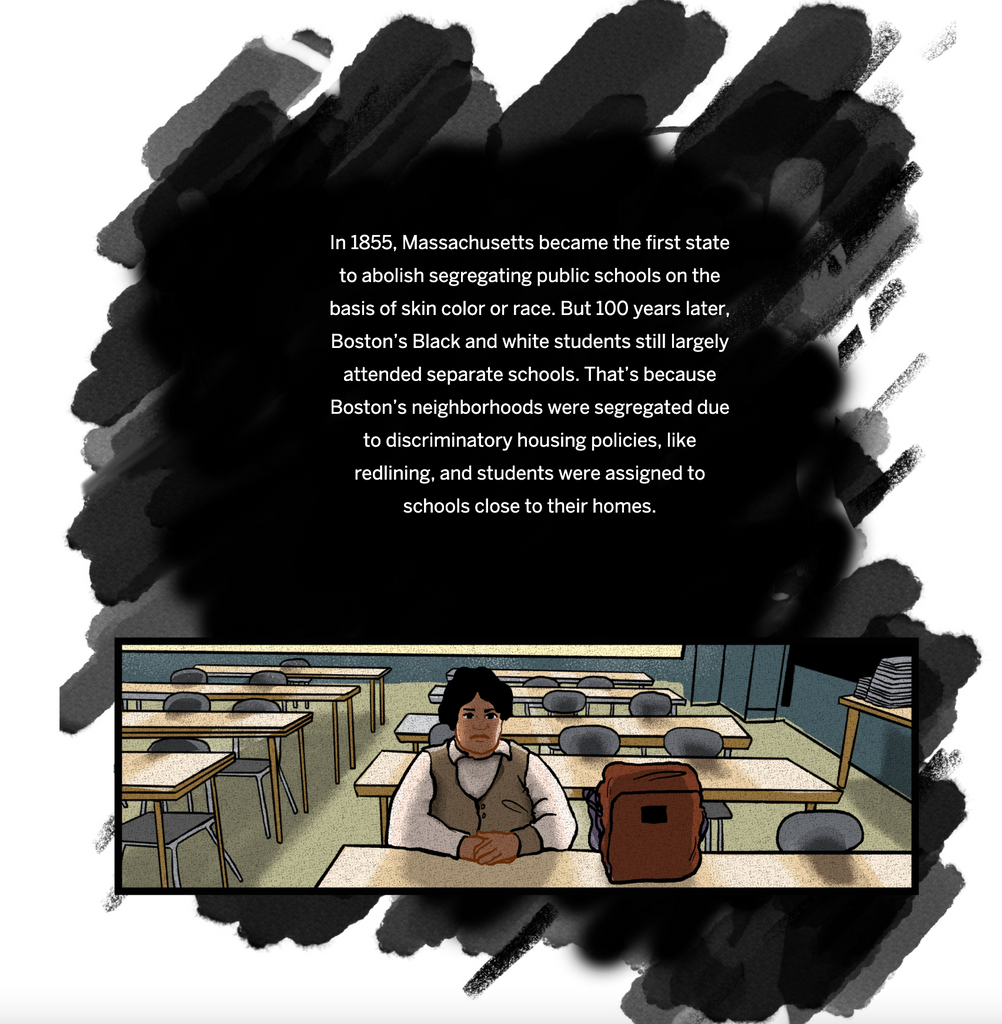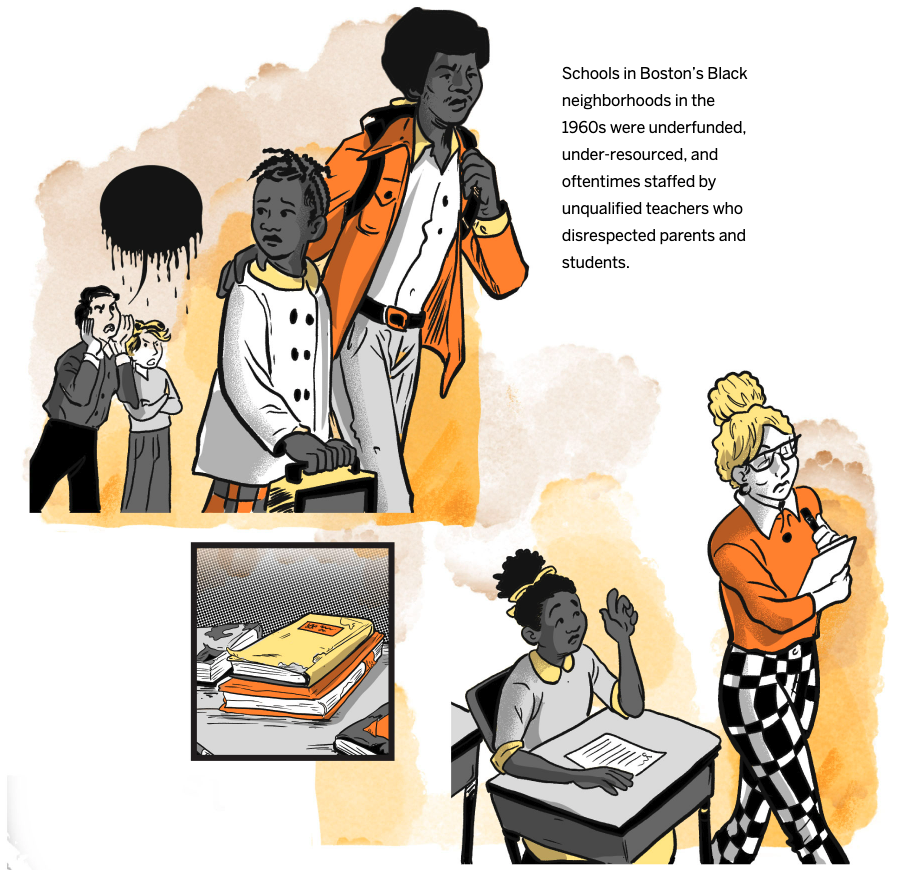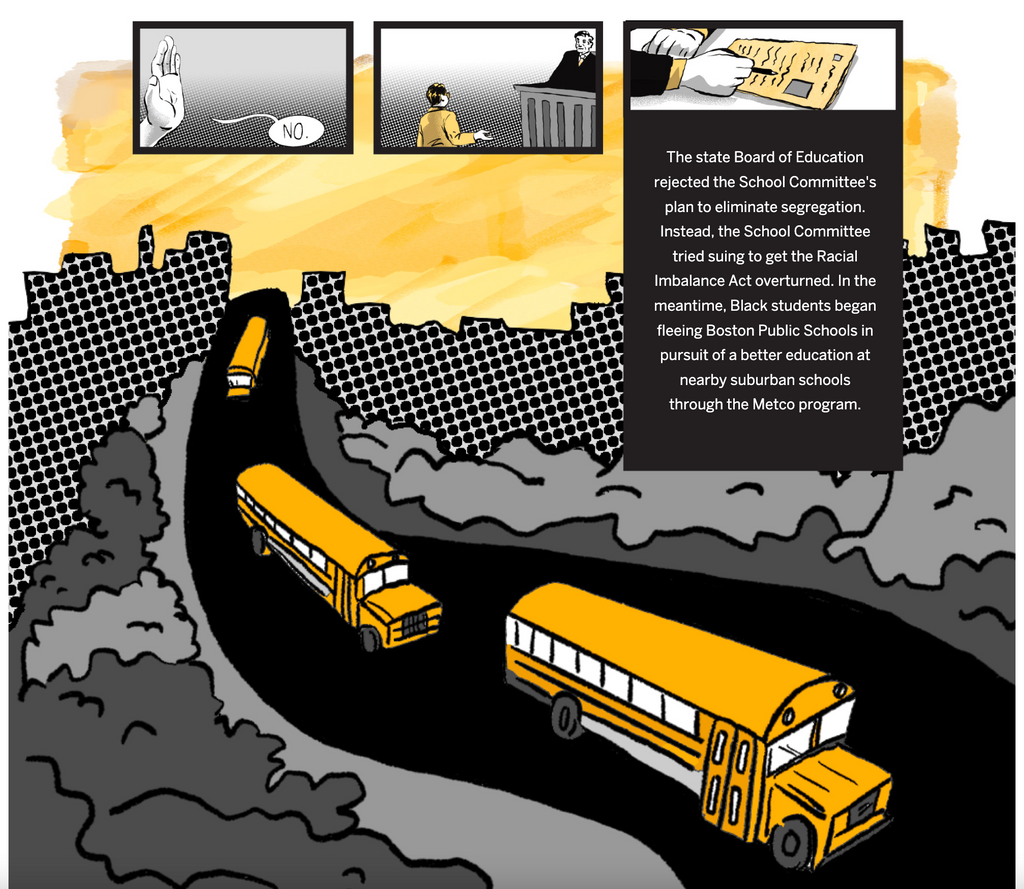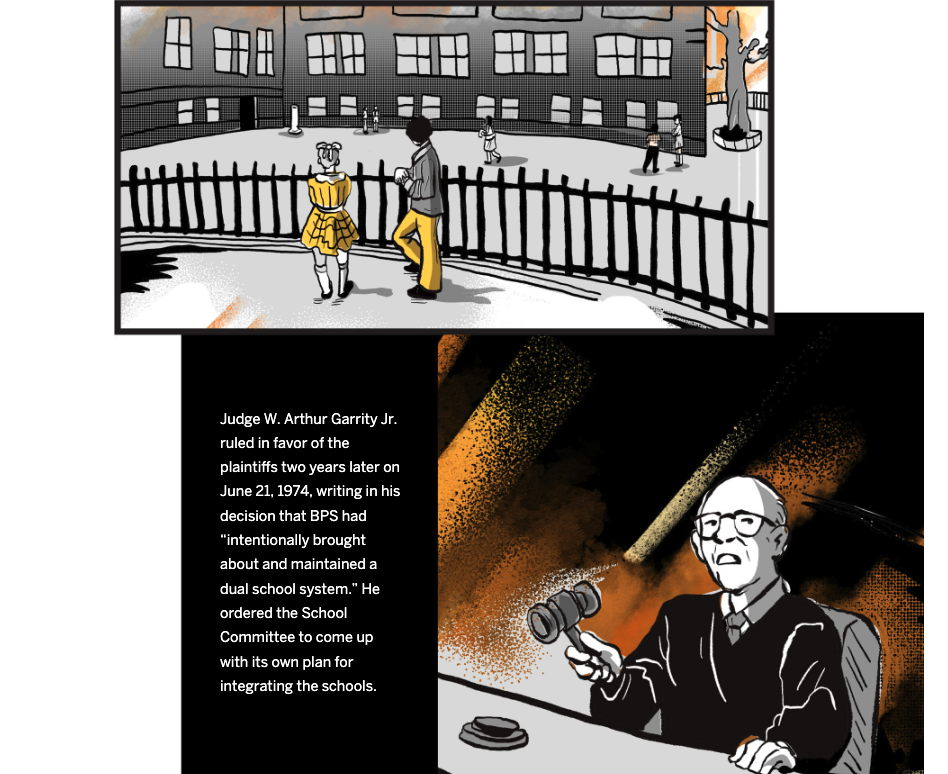MFA Visual Narrative Storytellers Illustrate The History of the Busing Crisis in Boston for The Boston Globe

MFA Visual Narrative Storytellers Illustrate The History of the Busing Crisis in Boston for The Boston Globe
The Boston Globe story on the busing crisis in Boston was developed in collaboration with The Gutter Studios, a collective of visual storytellers from Boston University’s MFA in Visual Narrative.
Before we get to the actual story, how did this opportunity for BU MFA Visual Narrative storytellers come together?
Instead of solely using text to convey the history of the busing crisis in Boston, The Boston Globe sought a team of visual storytellers to illustrate in detail the hardships Black students and families face(d) in Boston’s Public Schools system. Ryan Huddle, Design Director at The Boston Globe, reached out to Joel Christian Gill (CFA’04), Associate Professor of Art and Chair of BU School of Visual Arts‘ Department of Visual Narrative, to find out if Gill and his team would be interested in creating the illustrations.
Gill, along with a mix of visual narrative alums and current students – Francis Bordeleau (CFA’25), Ella Scheuerell (CFA’24), Dajia Zhou (CFA’24), and Sandeep Badal (CFA’24) – worked together in one month to bring the story to life through graphics.
Call them The Gutter Studios, a collective of visual storytellers from BU School of Visual Arts’ MFA in Visual Narrative. The Gutter Studios stems from the program’s goal of providing students with real-world experience as they pursue their MFA degree.
AN ILLUSTRATED HISTORY OF THE BUSING CRISIS IN BOSTON
Selections from An Illustrated History of the Busing Crisis in Boston
Published June 25, 2024 in The Boston Globe
Written by Deanna Pan, Globe Staff. Illustrations by Joel Christian Gill, Francis Bordeleau, Ella Scheuerell, Dajia Zhou, and Sandeep Badal, The Gutter Studios


Schools in Boston’s Black neighborhoods were also falling apart. The Sherwin School in Roxbury reportedly reeked of a stench so strong, parents and children could smell it from the playground across the street.
The Boston Chapter of the NAACP wanted the School Committee to acknowledge the pernicious effects of de facto segregation on the city’s schools. A groundbreaking 1965 report by the state Board of Education’s Task Force on Racial Imbalance showed school segregation was hurting Black and white students alike. Segregated schools also encouraged prejudice among all children, regardless of race.

That year, Governor John Volpe signed the Racial Imbalance Act into law, requiring public school districts to integrate or risk losing state funds.
Despite years of protests and calls for change, the Boston School Committee resisted reforms that would integrate the city’s schools. The School Committee’s most vocal opponent of forced integration was Louise Day Hicks, a white woman from South Boston who served as its chairwoman from 1963 to 1965, and who favored neighborhood schools and denied de facto segregation was a problem.

On March 15, 1972, the Boston NAACP filed a class-action suit, Morgan v. Hennigan, in federal court on behalf of 14 parents and 43 children. Tallulah Morgan, a young mother of three, was the lead plaintiff. The plaintiffs argued the city’s schools were deliberately and unconstitutionally segregated.

Until then, thousands of Black and white students would be bused to schools outside their neighborhoods in the fall…

Crafting stories that integrate written and visual language.
BU’s MFA in Visual Narrative allows students to craft stories in the medium of comics, long-form graphic novels, picture books, and transmedia that integrate written and visual language. As one of only a handful of programs in the country, BU visual narrative students develop nonfiction narratives that correlate with a specific area of personal engagement and conceptual artistic interest, such as social justice, history, gender studies, or the natural and social sciences. By doing so, they are better able to promote diversity and inclusion efforts by sharing the social experiences of marginalized individuals.